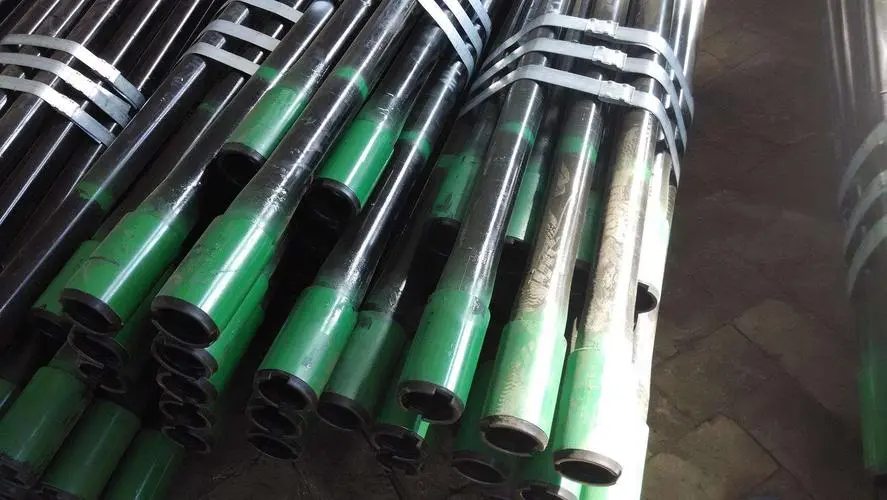Table of Contents
Advantages of Pn0.6-Pn1.6MPa HDPE Water Pipe in Water Supply Systems
Pn0.6-Pn1.6MPa HDPE water pipes have emerged as a prominent choice in water supply systems due to their numerous advantages. These pipes, made from high-density polyethylene (HDPE), offer a range of benefits that make them highly desirable for water supply, gas, and oil transmission applications.
One of the key advantages of Pn0.6-Pn1.6MPa HDPE water pipes is their exceptional durability. HDPE is known for its high tensile strength and resistance to corrosion, abrasion, and Chemicals. This durability ensures that HDPE pipes have a long service life, reducing the need for frequent replacements and maintenance. As a result, water supply systems utilizing HDPE pipes can operate efficiently and reliably for many years.

In addition to their durability, Pn0.6-Pn1.6MPa HDPE water pipes are lightweight and flexible, making them easy to transport, handle, and install. Unlike traditional materials such as metal or concrete pipes, which are heavy and rigid, HDPE pipes can be easily maneuvered into place, even in challenging terrain or confined spaces. This flexibility simplifies the installation process and can reduce labor and equipment costs.
Another advantage of Pn0.6-Pn1.6MPa HDPE water pipes is their resistance to corrosion and chemical degradation. Unlike metal pipes, which are prone to rust and corrosion over time, HDPE pipes are immune to the effects of corrosion, making them ideal for use in corrosive environments or for conveying chemically-treated water. This resistance to corrosion ensures that the quality of the water remains unaffected, maintaining the integrity of the water supply system.
Furthermore, Pn0.6-Pn1.6MPa HDPE water pipes have smooth inner walls that promote efficient water flow. Unlike pipes with rough surfaces, which can cause friction and reduce flow rates, HDPE pipes offer excellent hydraulic performance, minimizing energy consumption and pressure losses. This smooth flow characteristic is particularly advantageous for water supply systems that require high flow rates or operate over long distances.
HDPE pipes are also highly resistant to impact and external loads, making them suitable for underground and aboveground installations. Whether buried beneath roads, rivers, or buildings, or suspended from bridges or elevated structures, HDPE pipes can withstand the stresses and strains imposed by external forces. This resilience ensures the structural integrity of the water supply system, reducing the risk of leaks, breaks, or failures.
Additionally, Pn0.6-Pn1.6MPa HDPE water pipes are environmentally friendly and sustainable. HDPE is a recyclable material, and HDPE pipes can be easily recycled at the end of their service life, reducing waste and conserving resources. Furthermore, HDPE pipes require less energy to manufacture and transport compared to traditional materials, resulting in lower carbon emissions and environmental impact.
In conclusion, Pn0.6-Pn1.6MPa HDPE water pipes offer numerous advantages for water supply systems. Their durability, flexibility, corrosion resistance, smooth flow characteristics, and environmental sustainability make them an excellent choice for conveying water, gas, and oil. By utilizing HDPE pipes, water supply systems can achieve reliable performance, cost-effectiveness, and long-term sustainability.
Key Considerations for Gas and Oil Transmission with Pn0.6-Pn1.6MPa HDPE Water Pipe
Pn0.6-Pn1.6MPa HDPE water pipes play a crucial role in various industries, particularly in gas and oil transmission. These pipes are designed to withstand high pressure Levels, making them suitable for Transporting gas, oil, and water over long distances. However, before utilizing these pipes for gas and oil transmission, several key considerations must be taken into account.
First and foremost, it is essential to understand the characteristics of Pn0.6-Pn1.6MPa HDPE water pipes. High-density polyethylene (HDPE) is known for its exceptional strength, durability, and resistance to corrosion. These properties make HDPE pipes an ideal choice for gas and oil transmission applications where reliability and longevity are paramount.
When selecting Pn0.6-Pn1.6MPa HDPE water pipes for gas and oil transmission, one must consider the operating pressure range. The Pn0.6-Pn1.6MPa designation indicates the maximum allowable operating pressure for the pipes. It is crucial to ensure that the selected pipes can withstand the pressure requirements of the specific transmission system to prevent leaks, ruptures, or other integrity issues.
Additionally, the compatibility of HDPE pipes with gas and oil must be thoroughly evaluated. HDPE is inherently resistant to many chemicals, including hydrocarbons found in gas and oil. However, it is essential to confirm that the pipes are compatible with the specific type of gas or oil being transported to avoid any adverse reactions that could compromise the integrity of the system.
Furthermore, proper installation practices are critical to the performance and longevity of Pn0.6-Pn1.6MPa HDPE water pipes in gas and oil transmission applications. Installation must be carried out by trained professionals following industry standards and guidelines to ensure the pipes are properly aligned, supported, and joined. Improper installation can Lead to stress concentrations, leaks, and premature failures.
Regular inspection and maintenance are essential to ensure the continued reliability of HDPE pipes in gas and oil transmission systems. Inspections should include visual assessments, pressure testing, and leak detection to identify any potential issues before they escalate into more significant problems. Additionally, any damage or deterioration observed during inspections should be promptly addressed to prevent disruptions to the transmission process.
In conclusion, Pn0.6-Pn1.6MPa HDPE water pipes are a reliable choice for gas and oil transmission due to their strength, durability, and chemical resistance. However, several key considerations must be taken into account when utilizing these pipes in such applications. Understanding the operating pressure range, ensuring compatibility with gas and oil, following proper installation practices, and conducting regular inspections and maintenance are essential steps to maximize the performance and longevity of HDPE pipes in gas and oil transmission systems. By addressing these considerations, stakeholders can ensure the safe and efficient transportation of gas and oil using Pn0.6-Pn1.6MPa HDPE water pipes.
